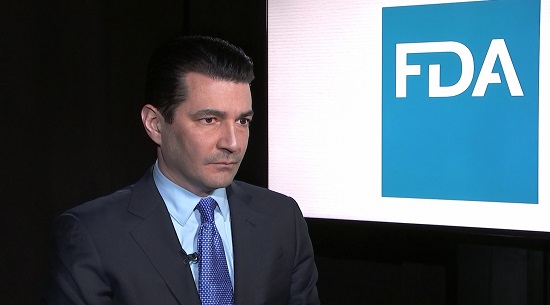FDA chief Gottlieb is building a regulatory speedway to accelerate gene therapy development
You need a license to cut-and-paste this copyrighted news content.
You need a license to cut-and-paste this copyrighted news content.
Use this link to purchase your paid subscription ($200/year for individuals and $1,000/year for companies of every size): https://endpts.com/subscribe
In a rallying cry for gene therapy, FDA Commissioner Scott Gottlieb says he’s determined to clear the pathway for drug developers in a move to accelerate the first wave of gene therapies pointed to the market.
The first therapeutic area to benefit from new surrogate endpoints will be hemophilia, Gottlieb said — immediately ringing a bell for companies like Spark Therapeutics $ONCE, Pfizer $PFE, BioMarin $BMRN and uniQure $QURE, which are developing cures for both versions of the bleeding disorder. Under the yet-to-be-announced guidelines, factor production may in some cases be sufficient as a measure of benefit.
Gottlieb discussed the FDA’s policy plans for gene therapy Tuesday at the annual board meeting of the Alliance for Regenerative Medicine. Quoting an MIT study that predicts 40 FDA-approved gene therapy products by the end of 2022, he acknowledged both the “breathtaking” pace of progress and his agency’s role in facilitating it all.
“FDA has more than 500 active investigational new drug applications involving gene therapy products,” Gottlieb said. “We’ve received more than one hundred such applications last year alone. This shows the intensity of scientific work going on in this field.”
To speed things along, Gottlieb suggested, certain gene therapies may qualify for the regenerative medicine advanced therapy (RMAT) designation — a status established by the 21st Century Cures Act that confers all the benefits of fast track and breakthrough designations. Developers may also eventually apply for accelerated approval, where the FDA would be willing to accept more uncertainty in exchange for promising therapies in “devastating diseases.” Longterm effectiveness — or even traditional measurements, such as the demonstration of a reduction in bleeding rates in hemophilia — could come in postmarket follow-ups.
“The use of registries and real-world evidence are likely to play an increasingly important role in this respect,” the commissioner said. “Part of our goal is to move toward a system that allows more real-time surveillance of safety questions after new products are approved.”
But that still leaves the inherent problems in developing and commercializing gene therapies to be solved.
When you compare reviews of cell and gene therapies from those of traditional drugs, Gottlieb pointed out, you see that the breakdown of clinical versus product issues is almost completed inverted. For these therapies, clinical efficacy is often established early, thus taking up only 20% of the review, while reviewers often devote 80% of the process to work out manufacturing and quality concerns.
Gottlieb spotlighted two manufacturing-related issues hindering the development of gene therapy. The inefficient process of producing gene therapy vectors — the lentiviruses and adeno-associated viruses that delivers the “correct” copies of genes to patients — makes it prohibitively expensive. Furthermore, the conventional pharma paradigm, which separates early-stage pilot manufacturing from the commercial process, means some treatments would be caught up, or even abandoned, in the transition.
The FDA is trying to help on that front, through an initiative to improve the yield of cell lines and by “actively pursuing new investments” in continuous manufacturing (as opposed to batch manufacturing) platforms.
With a field that’s moving ahead rapidly and a technology that’s going to “transform medicine and human health,” the FDA is keen to address any challenges in manufacturing and clinical development, Gottlieb said.
Reference:https://endpts.com/fda-chief-gottlieb-is-building-a-regulatory-speedway-to-accelerate-gene-therapy-development/





ارسال به دوستان